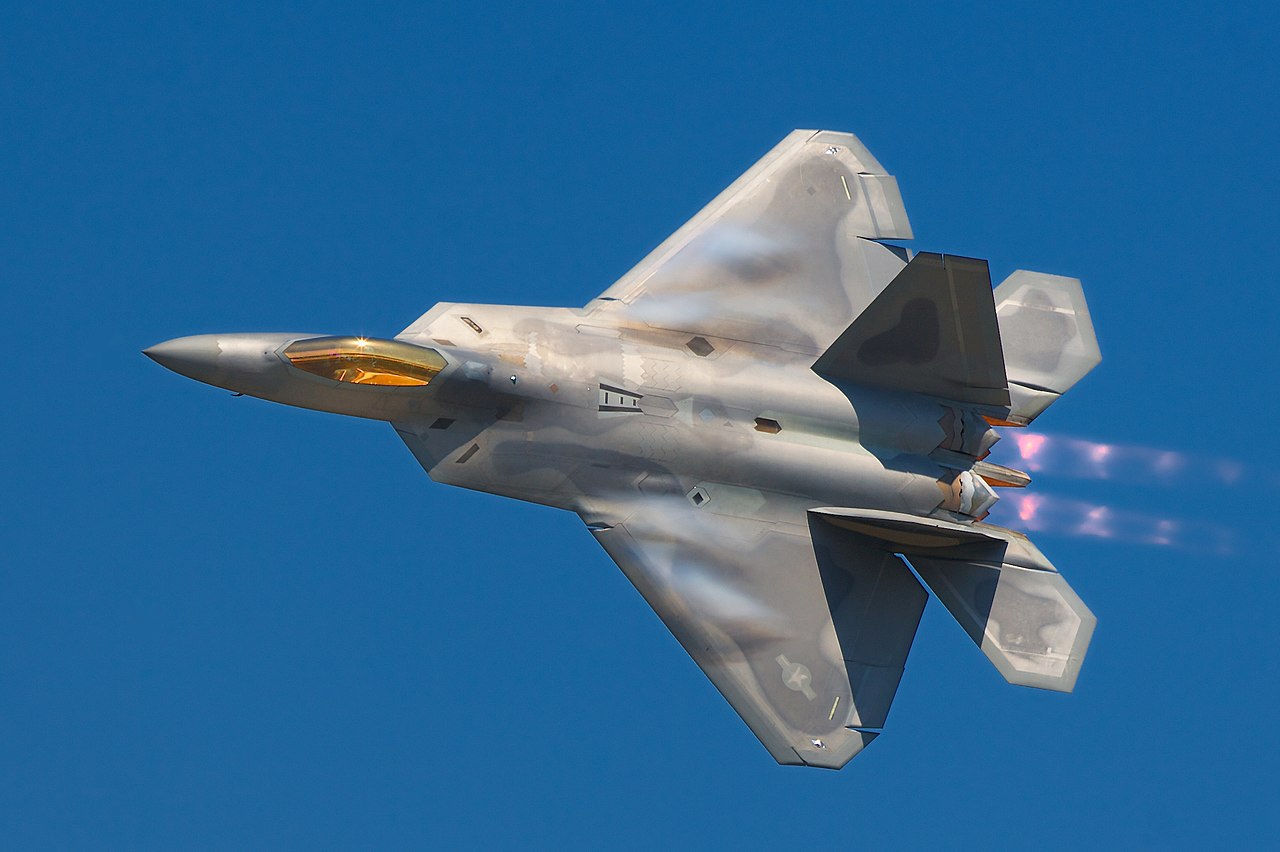
Imagine
is you cannot see them coming. But, can you still hear them
coming? Jets are noisy things to hide. In the fictional John
Storm adventures, the suit made for him by Dan Hawk, is
cloaking clothing of sorts. The first use being to storm Guantánamo
Bay and rescue the reborn Cleopatra.
6 DECEMBER 2024 POPULAR MECHANICS - CHINA INVENTED A NEW INVISIBILITY CLOAK. WHAT DOES THAT MEAN FOR THE FUTURE OF WARFARE?
Imagine a warplane shrouded by a “cloak” that can zip through the skies, reliably protected from enemies’ eyes. Earlier this year, scientists at Zhejiang University in
China announced that they had created just that: an “aeroamphibious invisibility cloak” for
aircraft - similar to what you might see on Star
Trek. Now, the Chinese military wants to apply the new stealth technology to its growing drone fleet.
Aircraft are spotted when they reflect incoming waves from radar systems. But invisibility cloaks are crafted to trick radar systems with specially engineered materials that bend these waves around the aircraft as if they were passing through a plane. The goal is to manipulate waves across the electromagnetic spectrum, including the portions visible and invisible to the human eye.
Militaries around the world have worked for decades to make weapons platforms like warplanes undetectable to radar systems. But such stealth tech is far from perfect, and these weapons can still be spotted with the right radar. Now, the Zhejiang University team says they can close the invisibility gap and render aircraft entirely imperceptible. But is it all too good to be true?
Before invisibility cloaks, stealth planes were the most cutting-edge option available. The exterior of these aircraft are built with special composite materials, which contain substances like graphene and
carbon
fiber, that can absorb certain types of radar waves rather than pinging them back. Stealth planes like America’s F-35, F-22 Raptor, and B-2 Spirit are also designed with flat surfaces to reflect as few radar waves as possible, and instead appear to be a bat or a bird traversing the sky. Similar designs on submarines make these steel beasts undetectable to sonar operators.
The U.S. military took the initial lead on stealth planes. In the 1970s, the U.S. Department of Defense began developing this technology, which wasn’t publicly announced until a
Pentagon press conference in 1980. Then, the country’s first stealth plane was introduced into combat in 1989. From that moment on, U.S. rivals (and even some allies) began developing countermeasures to detect and shoot down the Pentagon’s sly new aircraft.
These nations have developed countermeasures for detecting stealth planes, such as more sophisticated types of radar that can catch a broader spectrum of frequencies.
Today, Russia employs systems that operate on relatively low frequency bands, including the Nebo-M radar. This system sends out long wavelengths, which makes it more difficult for the stealth planes to avoid radar pulses. U.S. stealth planes, for example, can be spotted by Nebo-M radar because they’re designed to escape shorter radar wavelengths.
China, meanwhile, claims to have developed a new radar system that uses the country’s BeiDou satellite constellations to detect slight refractions from passing stealth planes. “Using a simple receiving antenna, the radar is cost-effective, can be deployed almost anywhere on Earth and does not emit signals that might reveal its location,” according to the South China Morning Post.
Combined with advancing radar systems, the new invisibility cloaking technology from Zhejiang University could offer China an unparalleled advantage over its rivals.
China has sought out true invisibility with the help of advanced metamaterials for over a decade. Liu Ruopeng, an entrepreneur dubbed “China’s Elon Musk”, has researched these engineered synthetic materials for nearly two decades.
By 2011, scientists at Guangqi Advanced Institute of Technology in China were already mass-producing specialized metamaterials for potential use in China’s ongoing fifth-generation warplane program (the J-35 and the J-20 “Mighty
Dragon” are its two fifth-gen warplanes).
Two years later, scientists at the University of Texas, Austin, announced they too had created an invisibility cloak. But this was only designed to shield aircraft from microwave light. Then in 2016, scientists in the United Kingdom announced a “surface wave cloak” that could make curved surfaces appear flat when coming into contact with electromagnetic waves from multiple frequencies, preventing them from scattering and alerting radars.
A few years later, scientists from the U.S. and Canada achieved a major breakthrough in metamaterial production: an innovative new type of metalens, which is a flat surface that uses nanostructures to manipulate light. Unlike past stealth designs, this metalens renders an object invisible by expertly bending waves from across the entire visible light spectrum. The surface is filled with titanium nano-fins that can deftly guide incoming lightwaves, regardless of wavelength, through metamaterials that bend the waves with surgical precision. And because the metalens is relatively thin, it’s easier to use and produce than past designs.
In the meantime, the Chinese military has worked to take invisibility cloaks out of the lab and into the clouds. As of 2018, the Guangqi Advanced Institute of Technology was allegedly producing more than 100,000 square feet of electromagnetic materials every year. These were created for China’s fifth-generation warplane, the Chengdu J-20 “Mighty Dragon,” according to defense analysts Jeffrey Lin and P.W. Singer.
The Zhejiang University research team designed their invisibility cloak for a fast-moving drone, so they had to ensure that it could conceal a large, moving object in any weather and any environment, be it
air, water, or land.
The scientists had to overcome the significant obstacles faced by past invisibility cloak experiments. For one, the metamaterials used in previous designs struggled to bend electromagnetic waves consistently into a single spot to maintain invisibility. So, the researchers developed a new three-dimensional metamaterial to manipulate incoming waves and ensure that the cloak remains invisible in any context.
With the help of artificial intelligence, the cloak adjusts to changing conditions like a chameleon: on-board sensors gauge factors like the frequency and angular velocity of incoming radar waves, then AI processes this information and directs the drone to manipulate tiny structures on the metamaterial’s surface to guide the waves. Unlike other cloak concepts, the researchers say the intelligent system could theoretically work in real time without
human intervention.
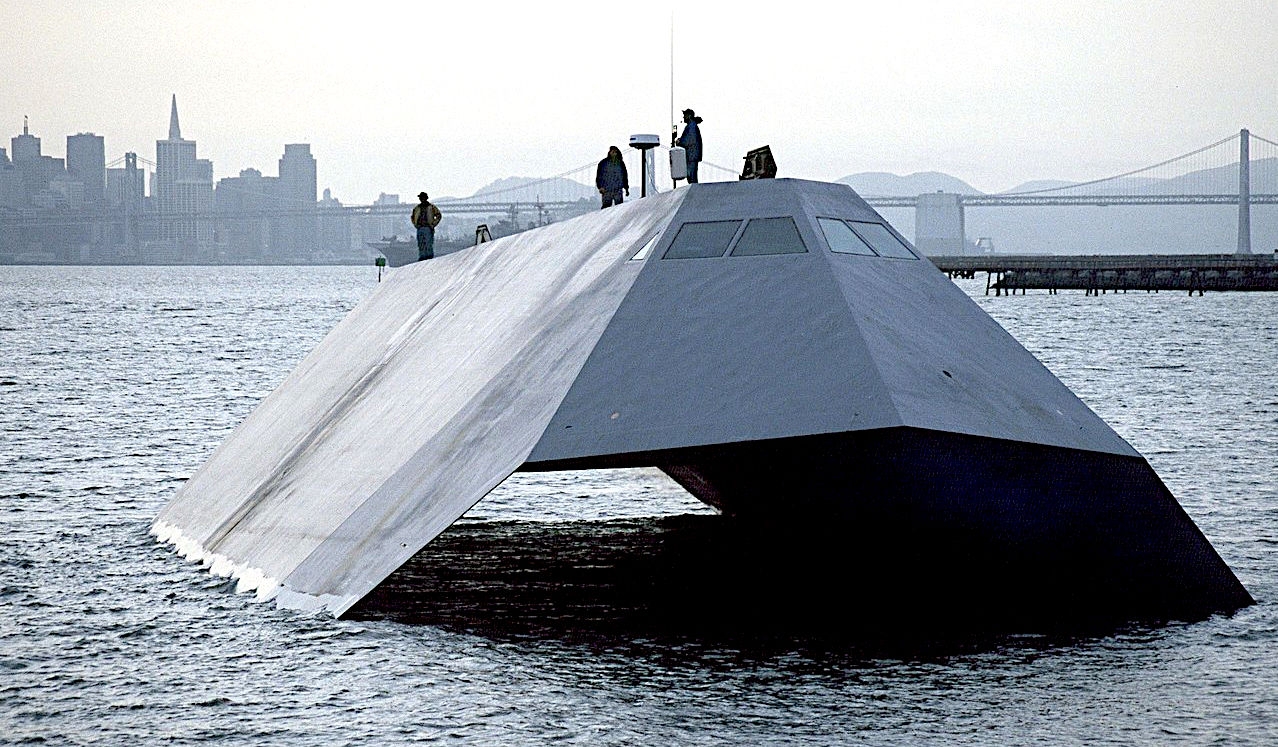
In indoor tests simulating land, sea, and air environments, the cloaked drone’s
electric field strength was, on average, about 90 percent similar to that of its background. This indicated that it tended to blend in significantly better than a drone without an invisibility cloak, which was only up to 45 percent similar in electric field strength relative to the background environment.
Zhejiang University’s new cloak technology has not been not applied to Chinese warplanes because it’s intended for use (at least initially) on China’s massive, growing fleet of drones. Cloaking a drone, or a swarm of drones, with real invisibility would be a decisive advantage for China in any possible conflict with the
United States or its allies in the Indo-Pacific region.
That goal may still be far off - invisibility cloaks still run into several challenges. For instance, invisibility cloaks struggle to precisely guide incoming radar waves from a wide range of frequencies.
But researchers around the world are continuing to perfect these devices, with the goal of reliable invisibility cloaks that can shroud vehicles, equipment, and even people in combat settings. Even a decade ago, the Chinese government was funding more than 40 different research projects on invisibility cloaks.
These shrouded drones could completely rewrite the rules of modern warfare. If, and when,
Beijing makes a move against neighboring Taiwan, most experts assume that swarms of drones will play a key role in China’s strategy against the island. Now, pair those drone swarms with the power of an invisibility cloak, and China’s forces could conceivably obliterate much of Taiwan’s defenses before ever setting foot on the island.
Should China fully achieve invisibility, the U.S. and its allies will be quite literally blind to a potential incoming Chinese attack.
Some
readers may remember that in World War Two, the German Luftwaffe,
were fended off with a network of radar pylons called the Chain
Home Guard. This network of radar listening
installations gave the United
Kingdom early warning of Nazi bombing raids, in the
so-called Battle of Britain.
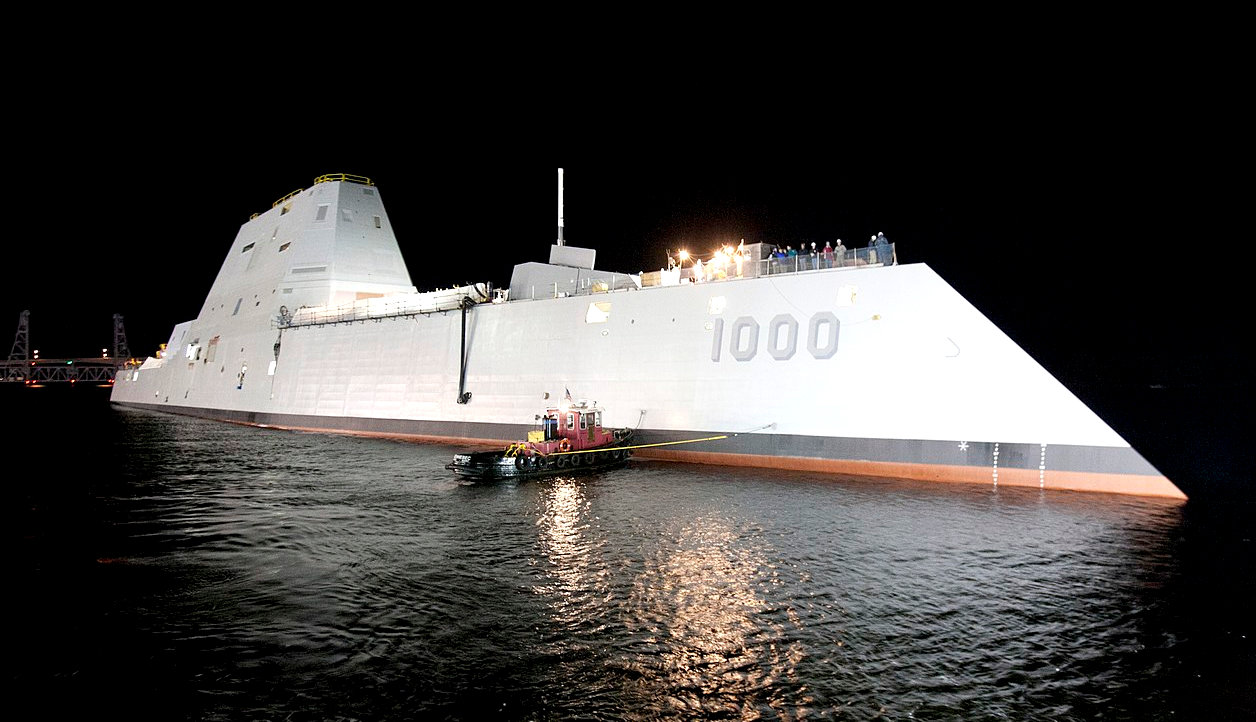
STEALTH SHIPS
A stealth ship is a ship which employs stealth technology construction techniques in an effort to ensure that it is harder to detect by one or more of radar, visual, sonar, and infrared methods.
These techniques borrow from stealth aircraft technology, although some aspects such as wake and acoustic signature reduction (acoustic quieting) are unique to stealth ships' design. Though radar cross-section (RCS) reduction is a fairly new concept many other forms of masking a ship have existed for centuries or even millennia.
The
Elizabeth
Swann is a virtual 'stealth' ship due to the angles of
the hull design, and the ability of the vessel to change the
angle of her solar
wings relative to the horizon. In addition, the electric
waterjet drives reduce the sonar signature, making them
linearly directional, as opposed to an unguarded general
sound broadcast, as in a traditional ship, open revolving propeller
design.

The
'Elizabeth Swann' cruising up the Amazon,
seen here in normal low-drag hull mode, with solar wings
tilted down on both sides, about 30 degrees from horizontal.
SHAPE OF STEALTH SHIPS
n designing a ship with reduced radar signature, the main concerns are radar beams originating near or slightly above the horizon (as seen from the ship) coming from distant patrol aircraft, other ships or sea-skimming anti-ship missiles with active radar seekers. Therefore, the shape of the ship avoids vertical surfaces, which would perfectly reflect any such beams directly back to the emitter. Retro-reflective right angles are eliminated to avoid causing the cat's eye effect. A stealthy ship shape can be achieved by constructing the hull and superstructure with a series of slightly protruding and retruding
surfaces. Furthermore, round shapes on the ship are eliminated or covered up, examples include smokestacks and gun turrets. Also, cavities that present a horizontal face are to be eliminated since they act like a trap and are very visible to radar. To get around these limitations many ships use features such as panels that cover reflective surfaces or use alternate designs of hardware. Also, every effort must be made to have the smallest gaps on the ship as possible. Hull shapes include tumblehome hull designs which slope inward from the waterline, and
small-waterplane-area twin hulls (SWATH) which allow for better stability when using a tumblehome hull. These RCS design principles were developed by several navies independently in the 1980s using work done on aircraft RCS reduction as the starting point.
The currently developed U.S. Zumwalt-class destroyer — or DD(X) — is the US version of a stealth ship. Despite being 40% larger than an Arleigh Burke-class destroyer the radar signature is more akin to a
fishing boat, according to a spokesman for Naval Sea Systems Command; sound levels are compared to the
Los Angeles-class
submarines. The tumblehome hull reduces radar return and the composite material deckhouse also has a low radar return. Water sleeting along the sides, along with passive cool air induction in the
back reduces infrared signature. Overall, the destroyer's angular build makes it "50 times harder to spot on radar than an ordinary destroyer.
The Swedish Navy's Visby class corvette is designed to elude visual detection, radar detection, acoustic detection, and infrared detection. The hull material is a sandwich construction comprising a PVC core with a carbon fibre and vinyl laminate. Avoidance of right angles in the design results in a smaller radar signature, reducing the ship's detection range.
Britain's Type 45 anti-air warfare destroyer has similarities to the Visby class, but is much more conventional, employing traditional steel instead of carbon fiber. Like Visby, its design reduces the use of right angles.
Taiwan's' Tuo Chiang-class stealth corvette are a class of fast stealth multi-mission corvettes currently in service with the Republic of China (Taiwan) Navy. The ships are designed to have a low radar cross-section and evade radar detection making it difficult to detect the ship when operating closer to the coastline.
Sea Shadow, which utilizes both tumblehome and SWATH features, was an early U.S. exploration of stealth ship technology.
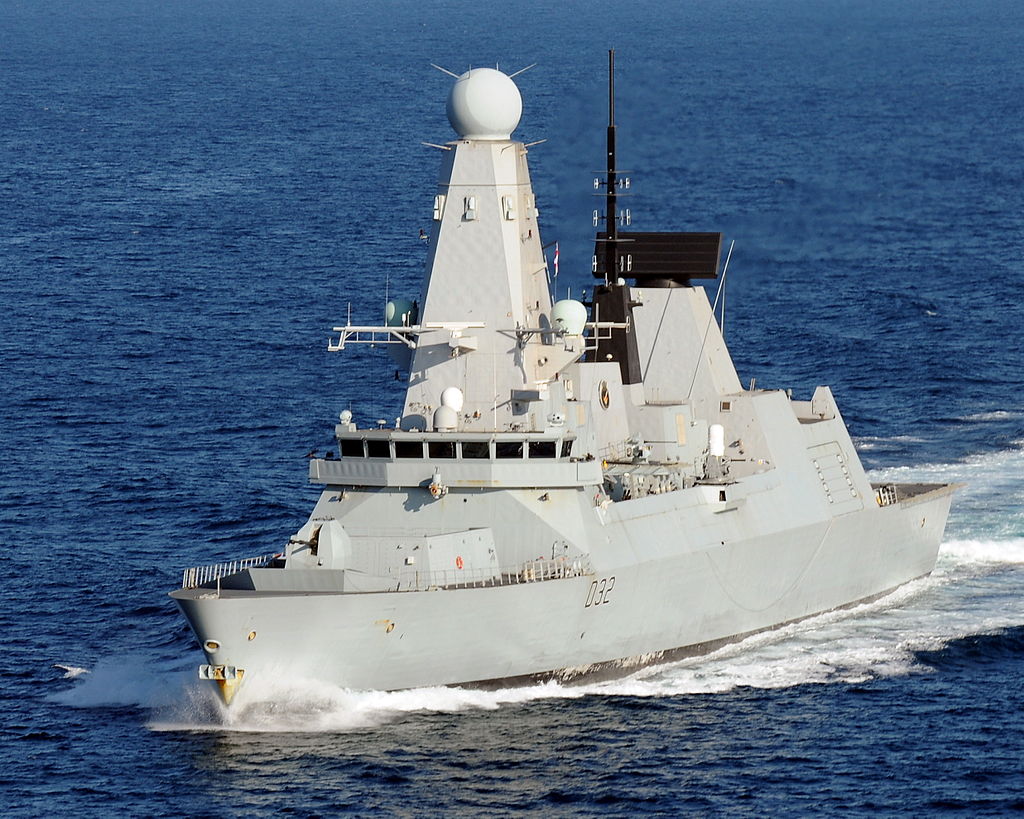
SIGNATURE REDUCTION
Stealth technology represents more than just a low RCS; noise reduction plays a huge role in naval stealth because sound travels much better in water than air. Some of the techniques used include muffled exhaust systems, modified propeller shapes, and pump-jets. The shape of the hull can also have a great effect on the reduction of the noise from a ship. Another major element is signal emission control. Modern warships emit much electromagnetic radiation in the form of radar, radio, and even bleed-off from the ship's electrical systems. All of this can be used to track a ship and thus modern stealth ships often have a mode that switches off many of the electronic emissions, the downside of course is that the ship then has to rely on passive sensors and can't easily send messages further than line of sight.
Also of great importance are thermal emissions. A heat signature can make a ship stand out like a candle in a dark ocean making it easier to spot and because it is possible to see infrared emissions through features that would normally hide a ship such as fog, or a smoke screen, many detection platforms like patrol aircraft, UAV's, and satellites often have the ability to see multiple bands in the infrared spectrum including heat. This necessitates the control of these emissions. The most common way is to mix any hot gasses emitted by the main source of heat which is the engines exhaust with cold air to dilute the signature and make it harder to pick out the ship from the background warmth. Another method vents the exhaust into the water though this increases the ship's acoustic signature. For the hull water can be actively distributed across the hull of the ship cooling the ship. Another less crucial but still relevant part of a stealth ship is visual camouflage. This area is probably the oldest form of stealth, with records going back almost as far as the writing of ancient mariners using visual tricks to make their ships harder to spot. Though still relevant this area has taken on lesser importance with the advent of long-range radar.
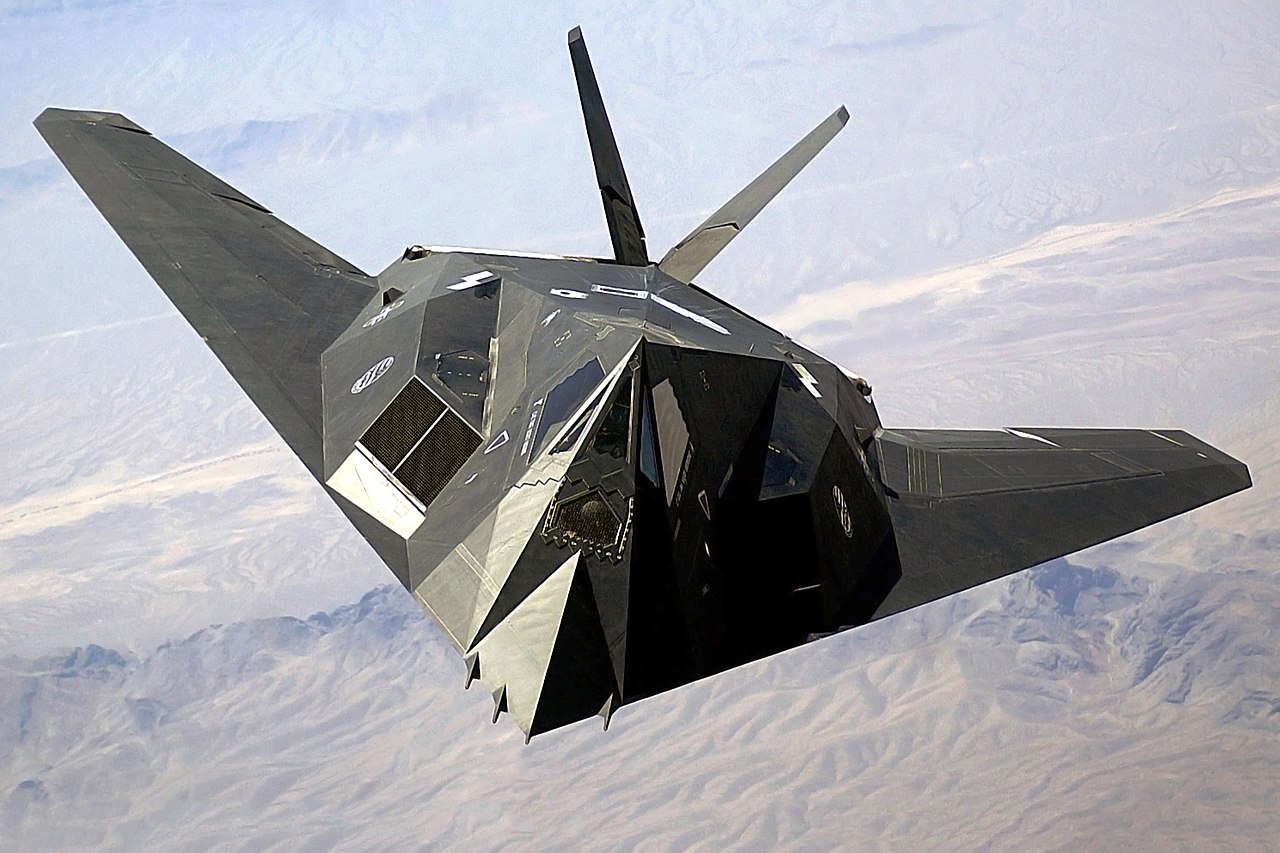
STEALTH
AIRCRAFT
Since radar-directed defenses began taking a toll of bomber formations in
World War
II, aircraft designers and military aviators have sought ways to avoid radar detection. Many materials of the early jet age were known to absorb radar energy rather than reflect it, but they were heavy and not strong enough for structural
applications. It was not until after the 1960s and ’70s, with the development of such materials as
carbon-fibre composites and high-strength plastics (which possessed structural strength as well as being transparent or translucent to radar), that radar signature reduction for piloted combat aircraft became possible.
While no aircraft is totally invisible to radar, stealth aircraft make it more difficult for conventional radar to detect or track the aircraft effectively, increasing the odds of an aircraft successfully avoiding detection by enemy radar and/or avoiding being successfully targeted by radar guided weapons. Stealth is the combination of passive low observable (LO) features and active emitters such as low-probability-of-intercept radars, radios and laser designators. These are usually combined with active measures such as carefully planning all mission maneuvers in order to minimize the aircraft's radar cross-section, since common actions such as hard turns or opening bomb bay doors can more than double an otherwise stealthy aircraft's radar return.
The existence of a Stealth program, designed to produce aircraft that were effectively immune to radar detection at normal combat ranges, was announced by the U.S. government in 1980. The first aircraft employing this technology, the single-seat Lockheed F-117A Nighthawk ground-attack fighter, became operational in 1983. The second was the Northrop B-2 Spirit strategic bomber, which first flew in 1989. Both aircraft had unconventional shapes that were designed primarily to reduce radar reflection. The B-2 was of a flying-wing design that made it only slightly longer than a fighter yet gave it a wingspan approaching that of the B-52, while the F-117A had a short pyramid-shaped fuselage and sharply swept wings.
Stealth aircraft are typically more expensive to develop and manufacture. An example is the B-2 Spirit that is many times more expensive to manufacture and support than conventional bomber aircraft. The B-2 program cost the U.S. Air Force almost $45 billion.
Reducing radar signature also required controlling shape, particularly by avoiding right angles, sharp curves, and large surfaces. In order to direct radar energy in the least-revealing directions, the external shape of a stealth aircraft was either a series of complex large-radius, curved surfaces (as on the B-2) or a large number of small, flat, carefully oriented planes (as on the F-117A). Fuel and ordnance were carried internally, and engine intakes and exhausts were set flush or low to the surface. To avoid interception of radar emissions, stealth aircraft had to rely on inertial guidance or other
non-emitting navigational systems.
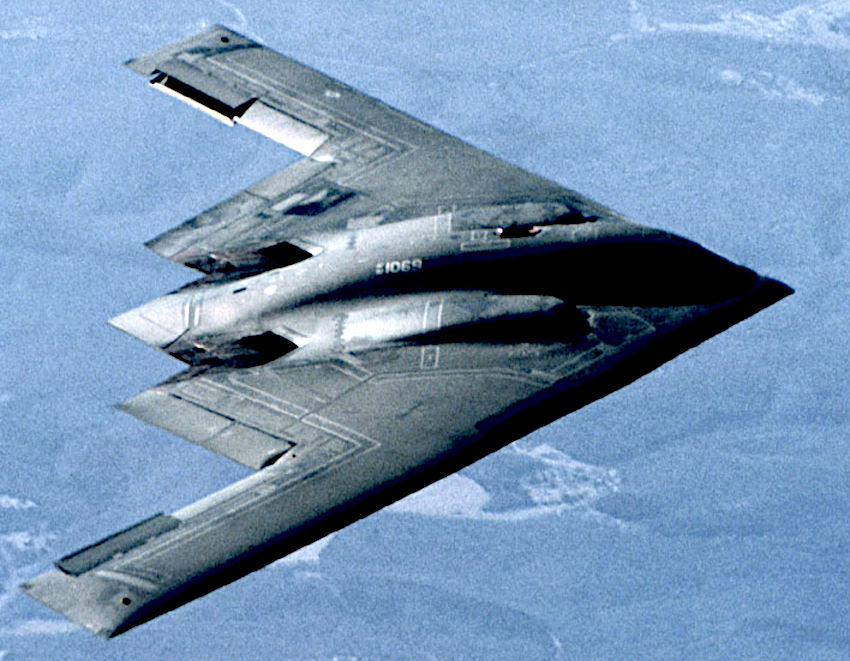
OPERATIONAL STEALTH AIRCRAFT
The U.S. and Israel are the only countries to have used stealth aircraft in combat. These deployments include the United States invasion of Panama, the first Gulf War, the Kosovo Conflict, the War in Afghanistan, the War in Iraq and the 2011 military intervention in Libya. The first use of stealth aircraft was in the U.S. invasion of Panama, where F-117 Nighthawk stealth attack aircraft were used to drop bombs on enemy airfields and positions while evading enemy radar.
In 1990 the F-117 Nighthawk was used in the First Gulf War, where F-117s flew 1,300 sorties and scored direct hits on 1,600 high-value targets in Iraq[38] while accumulating 6,905 flight hours. Only 2.5% of the American aircraft in Iraq were F-117s, yet they struck 40% of the strategic targets, dropping 2,000 tons of precision-guided munitions and striking their targets with an 80% success rate.
In the 1999 NATO bombing of Yugoslavia two stealth aircraft were used by the United States: the veteran F-117 Nighthawk, and the newly introduced B-2 Spirit strategic stealth bomber. The F-117 performed its usual role of striking precision high-value targets and performed well, although one F-117 was shot down by a Serbian Isayev S-125 'Neva-M' missile commanded by Colonel Zoltán Dani. The then-new B-2 Spirit was highly successful, destroying 33% of selected Serbian bombing targets in the first eight weeks of U.S. involvement in the War. During this war, B-2s flew non-stop to Kosovo from their home base in Missouri and back.
In the 2003 invasion of Iraq, F-117 Nighthawks and B-2 Spirits were used, and this was the last time the F-117 would see combat. F-117s dropped satellite-guided strike munitions on selected targets, with high success. B-2 Spirits conducted 49 sorties in the invasion, releasing 1.5 million pounds of munitions.
During the May 2011 operation to kill Osama bin Laden, one of the helicopters used to clandestinely insert U.S. troops into Pakistan crashed in the bin Laden compound. From the wreckage it was revealed this helicopter had stealth characteristics, making this the first publicly known operational use of a stealth helicopter.
Stealth aircraft were used in the 2011 military intervention in Libya, where B-2 Spirits dropped 40 bombs on a Libyan airfield with concentrated air defenses in support of the UN no-fly zone.
Stealth aircraft will continue to play a valuable role in air combat with the United States using the F-22 Raptor, B-2 Spirit, and the F-35 Lightning II to perform a variety of operations. The F-22 made its combat debut over Syria in September 2014 as part of the US-led coalition to defeat ISIS.
From February 2018, Su-57s performed the first international flight as they were spotted landing at the Russian Khmeimim air base in Syria. These Su-57s were deployed along with four Sukhoi Su-35 fighters, four Sukhoi Su-25s, and one Beriev A-50 AEW&C aircraft. It is believed that at least 4 Su-57 are deployed in Syria. and that they have likely been armed with cruise missiles in combat.
In 2018, a report surfaced noting that Israeli F-35I stealth fighters conducted a number of missions in Syria and even infiltrated Iranian airspace without detection. In May 2018, Major General Amikam Norkin of IAF reported that Israeli Air Force F-35I stealth fighters carried out the first-ever F-35 strike in combat over Syria.
The People's Republic of China started flight testing its Chengdu J-20 stealth multirole fighter around in 2011 and made its first public appearance at Airshow China 2016. The aircraft entered service with the People's Liberation Army Air Force (PLAAF) in March 2017. Another fifth-generation stealth multirole fighter from China, the Shenyang FC-31 has undergone flight testing.
LIST OF STEALTH AIRCRAFT
Dedicated reduced cross section designs
In service
B-2 Spirit - (United States)
F-22 Raptor - (United States)
F-35 Lightning II - (United States)
Chengdu J-20 – (China)
Sukhoi Su-57 – (Russia)
Retired
F-117 Nighthawk – (United States)
SR-71 Blackbird – (United States)
Under development
Shenyang J-35 – (China)
PAK DP – (Russia)
PAK DA – (Russia)
Sukhoi Su-75 – (Russia)
F/A-XX – (United States)
Next Generation Air Dominance – (United States)
B-21 Raider – (United States)
Xian H-20 – (China)
AMCA – (India)
BAE Systems Tempest – (United Kingdom)
Flygsystem 2020 – (Sweden)
Mitsubishi F-X – (Japan)
KAI KF-21 – (Korea / Indonesia)
TAI TFX – (Turkey)
Canceled
A-12 Avenger II – (United States)
853 Quiet Bird – (United States)
X-44 MANTA – (United States)
Lockheed FB-22 – (United States)
Mikoyan MiG LMFS – (Russia)
Mikoyan MiG 4.12 - (Russia)
Yakovlev Yak-201 - (Russia)
BAE Systems Replica – (United Kingdom)
EADS Mako – (Germany)
MBB Lampyridae – (Germany)
Horten H.XVIIIA - (Nazi Germany)
RAH-66 Comanche – (United States)
Technology demonstrators
Bird of Prey – (United States)
Have Blue – (United States)
McDonnell Douglas X-36 – (United States)
Northrop Tacit Blue – (United States)
Windecker YE-5 – (United States)
YF-22 – (United States)
YF-23 Black Widow II – (United States)
X-35 – (United States)
X-32 – (United States)
MiG 1.44 – (Soviet Union/Russia)
Mitsubishi X-2 – (Japan)
REFERENCES
https://www.popularmechanics.com/military/research/a63118295/china-invisibility-cloak/
https://www.popularmechanics.com/military/research/a63118295/china-invisibility-cloak/






